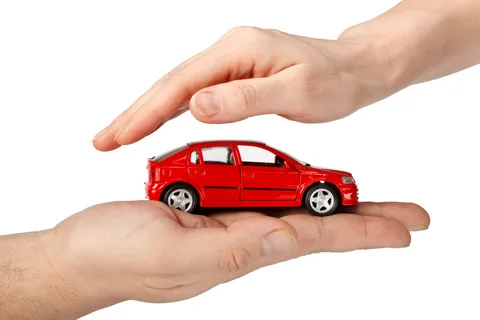Revolutionizing Car Insurance: A Roadmap to 21st-Century Coverage”
Introduction
In today’s fast-paced world, where innovation seems to touch every aspect of our lives, it’s surprising that car insurance has remained relatively stagnant for decades. While the fundamental concept of protecting drivers and their vehicles remains the same, the way we approach and utilize car insurance is on the cusp of a major transformation. In this article, we’ll explore the evolving landscape of car insurance, examining the forces driving change, the emerging trends, and what the future might hold for this vital financial safety net.
- Telematics: A Game Changer in Pricing
Traditionally, car insurance premiums have been calculated using demographic information, such as age, gender, and location. However, the advent of telematics has opened up new possibilities for more personalized pricing. Telematics involves using technology, like GPS and sensors, to collect data about driving habits. Insurance companies can then analyze this data to tailor premiums to an individual’s actual driving behavior.
This shift towards usage-based insurance has the potential to revolutionize the industry. Safe drivers who clock fewer miles or drive during off-peak hours could see significant reductions in their premiums. Conversely, high-risk drivers may face higher costs. The result is a fairer, more equitable pricing system that rewards safe driving.
Also read about Decoding the Complexity: Understanding the Growing Challenges in Programming Assignments
- Blockchain: Transparency and Fraud Prevention
Blockchain technology is not just for cryptocurrencies; it has the potential to disrupt car insurance as well. Blockchain can enhance transparency and security in the insurance process by creating immutable, tamper-proof records of insurance policies, claims, and payments.
This technology can also be used to combat insurance fraud, a major issue in the industry. With blockchain, insurers can verify the authenticity of claims and prevent duplicate or fraudulent claims, ultimately reducing costs for both insurers and policyholders.
- Pay-Per-Mile Insurance: Aligning Cost with Usage
Pay-per-mile insurance is another innovative approach gaining traction in the car insurance industry. As the name suggests, policyholders pay premiums based on the number of miles they drive. This concept not only provides cost savings for infrequent drivers but also encourages environmentally friendly driving habits.
Pay-per-mile insurance is particularly appealing to urban dwellers who rely on public transportation and only use their cars occasionally. By aligning the cost of insurance with actual usage, this approach reduces the financial burden on those who drive less frequently.
- Autonomous Vehicles: Shifting Liability
The rise of autonomous vehicles presents a unique challenge for the insurance industry. As these self-driving cars become more prevalent on our roads, the liability landscape will shift. While accidents caused by human error will decrease, new liability scenarios will emerge involving technology malfunctions, software glitches, and cyberattacks.
Insurance companies will need to adapt by offering specialized coverage for autonomous vehicles, focusing on protecting against these emerging risks. Additionally, premiums for traditional vehicles may decrease as overall accident rates decline, further reshaping the industry.
- Peer-to-Peer Insurance: Community-Based Coverage
Peer-to-peer (P2P) insurance is a novel approach that leverages the power of communities. In this model, groups of individuals come together to pool their resources and provide coverage for each other. P2P insurance can be more cost-effective and transparent, as it eliminates the profit motive typically associated with traditional insurers.
Community-based insurance platforms are emerging, allowing people to connect with others who share similar risk profiles. These platforms promote trust and transparency, fostering a sense of responsibility within the community.
- Artificial Intelligence: Streamlining Claims Processing
Artificial intelligence (AI) is becoming increasingly integrated into the car insurance industry, particularly in claims processing. AI-powered chatbots and virtual assistants can provide quick and efficient assistance to policyholders, guiding them through the claims process and answering their questions.
Machine learning algorithms can also analyze claims data to detect patterns of fraud or unusual activity, helping insurers identify potential issues more effectively. This not only saves time but also reduces the likelihood of fraudulent claims, ultimately benefiting all policyholders.
- Environmental Impact: Green Insurance
As environmental concerns continue to grow, so does the demand for eco-friendly insurance options. Green insurance policies are designed to provide coverage for electric and hybrid vehicles, as well as to incentivize eco-friendly driving habits.
Some insurers offer discounts or rewards to policyholders who drive fuel-efficient vehicles or reduce their carbon footprint. Green insurance aligns with the global push for sustainability and encourages responsible driving practices.
- On-Demand Insurance: Flexibility and Affordability
On-demand insurance, sometimes referred to as “microinsurance,” allows policyholders to purchase coverage for specific periods or activities. This flexibility is ideal for those who don’t drive regularly or only need coverage for short periods, such as a weekend road trip.
These policies can be purchased and managed through mobile apps, offering a level of convenience that traditional insurance models often lack. On-demand insurance provides affordability and customization, catering to the changing needs of modern drivers.
Conclusion
The world of car insurance is undergoing a profound transformation, driven by technology, changing driving habits, and a growing awareness of environmental and social issues. The traditional model of car insurance, based on fixed premiums and limited flexibility, is giving way to a more dynamic, personalized, and community-oriented approach.
As these innovations continue to shape the industry, car insurance is becoming more than just a safety net for drivers; it’s evolving into a tool that promotes responsible driving, sustainability, and financial empowerment. The future of car insurance promises a fairer, more transparent, and adaptable system that benefits both insurers and policyholders alike. Embracing these changes will not only safeguard our vehicles but also drive us toward a safer and more sustainable future on the roads.



